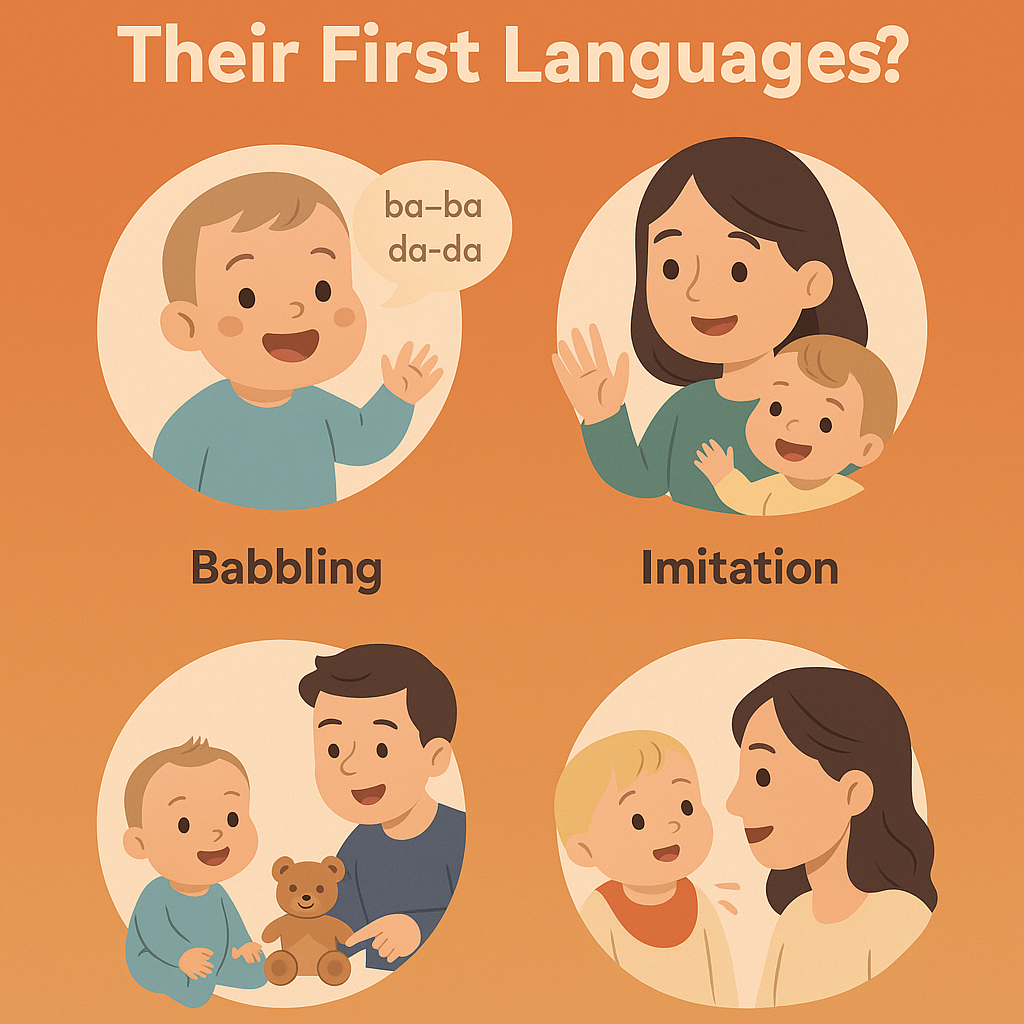Introduction: Tiny Brains, Big Discoveries
Ever wonder how your baby goes from gurgles to words like “mama” and “ball” so quickly? It might seem like magic—but it’s actually a beautifully orchestrated process driven by science, social interaction, and your baby’s natural instincts.
From birth, your little one is absorbing sounds, gestures, and rhythms long before speaking a single word. And as a parent, you’re their most powerful language teacher—even when you don’t realize it.
This guide breaks down the remarkable techniques babies use to learn language, so you can better understand—and support—their speech journey.
How Do Babies Start Learning Language?

1. Tuning Into Sounds and Patterns
Babies begin listening to voices even in the womb! By the time they’re born, they already recognize your voice and the rhythm of your native language.
At just a few days old, babies can:
- Differentiate between similar sounds (like “b” and “p”)
- Show preference for their mother’s voice
- React more to exaggerated speech (aka baby talk or “infant-directed speech”)
Try This: Speak slowly with exaggerated highs and lows. It holds their attention—and helps them learn how speech works.
2. Imitating What They Hear and See
Around 6–8 weeks, babies begin mimicking mouth movements. By 6 months, they start babbling sounds like “ba-ba” and “da-da,” practicing the building blocks of real words.
They learn by:
- Watching your lips and facial expressions
- Repeating rhythmic patterns and tones
- Mimicking intonation before mastering vocabulary
???? Parent Tip: Talk face-to-face often. Babies love mirroring your expressions—it’s their first language lesson!
3. Using Gestures as a Communication Bridge
Before they can speak, babies communicate with hands. Waving, pointing, and even signing (“milk,” “more”) are powerful tools.
These gestures:
- Strengthen early communication
- Reduce frustration
- Boost later vocabulary, according to research from the NIH and the AAP
???? Consider using simple baby signs. They don’t delay speech—on the contrary, they enhance understanding.
The Science Behind Baby Language Learning
Studies show babies are natural statisticians. Yes, really. By tracking how often certain sounds appear together, they predict word boundaries.
For example, in the phrase “pretty baby”, your baby learns that “pre” and “tty” often occur together—marking it as a possible word.
???? According to the American Academy of Pediatrics, interactive talk (not screen time) is what fuels these language-learning systems best.
What Role Do Parents Play in This Process?
Your baby isn’t learning in isolation. In fact, you’re the key to their progress.
What helps most:
- Responding to babbles with real words
- Using descriptive language: “That’s a red ball!”
- Naming objects and actions repeatedly
- Reading picture books daily
???? Did You Know? Children whose parents talk more to them in the first 3 years have larger vocabularies and better school performance later on (Hart & Risley study).
Key Takeaways
- Babies begin learning language from birth—long before their first word.
- They use listening, mimicking, and gesturing as foundational tools.
- Parents who talk, read, and interact are giving the best gift of all: communication.
Helpful Tools and Ideas
- ✅ Printable Milestone Chart – Track communication signs by age.
- ???? Recommended Book: “Baby Talk” by Dr. Sally Ward
- ???? Video: TED Talk – The Linguistic Genius of Babies by Patricia Kuhl
Want to Learn More?
Explore our guides:
